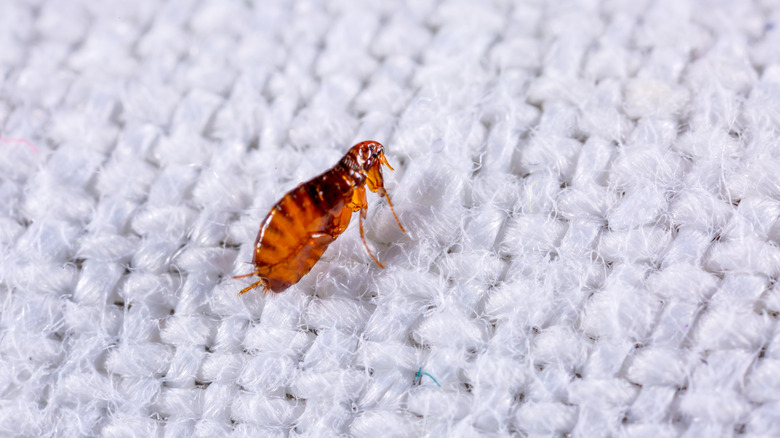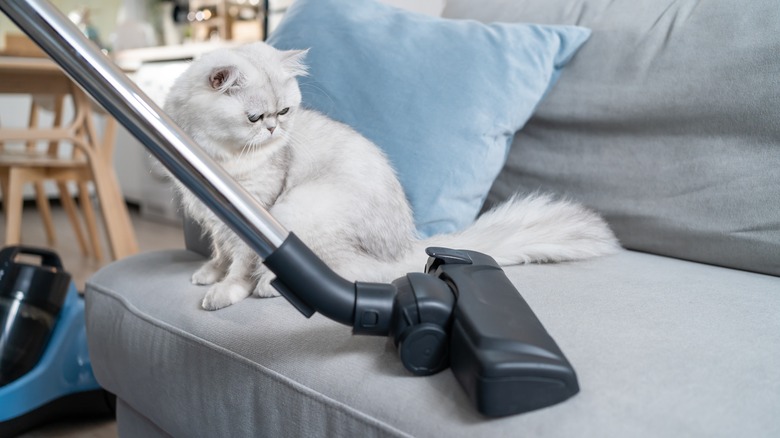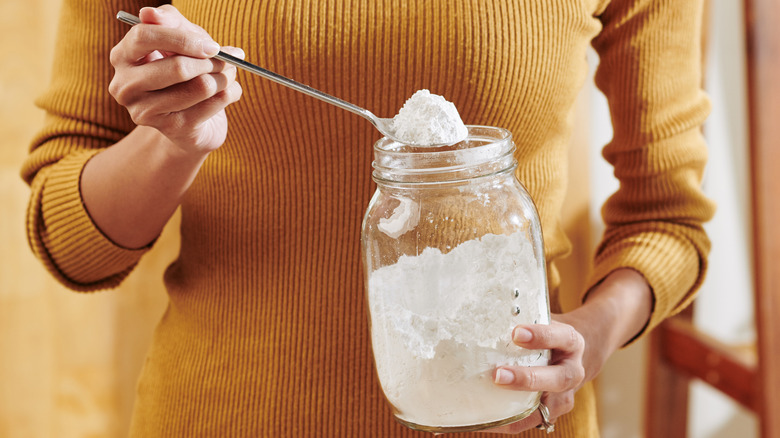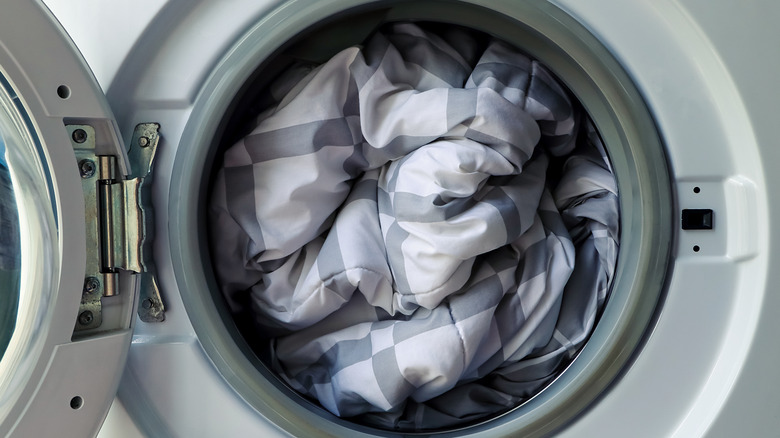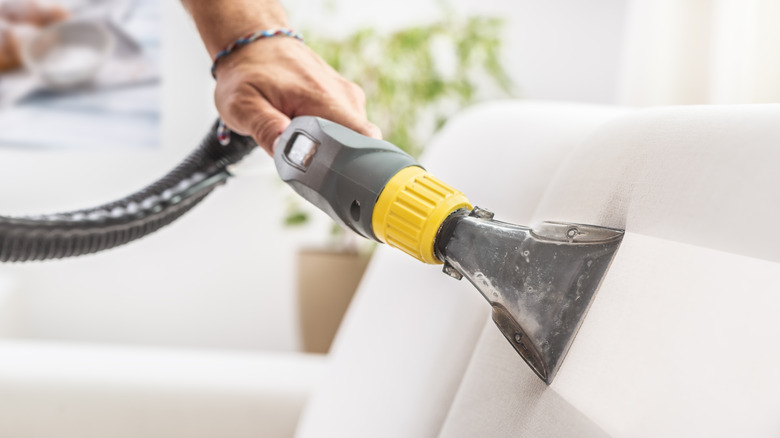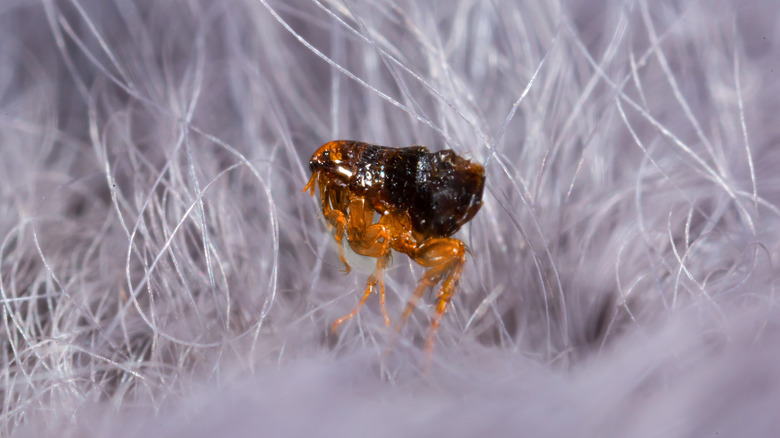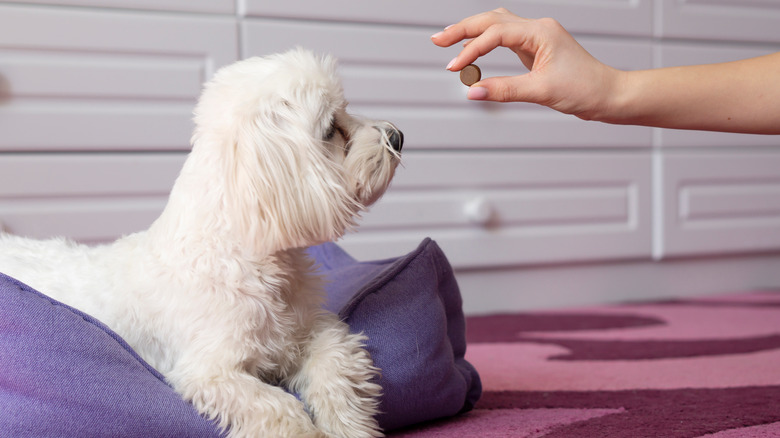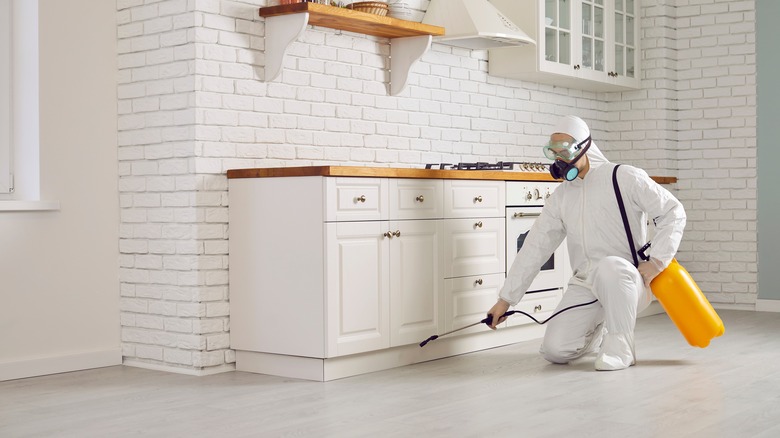The Best Ways To Get Rid Of Fleas In Your Home
Fleas can enter your home via used furniture, pets, rodents, and even people, and they can be a pesky pest to deal with, especially because of how long they live and how fast they multiply. In fact, the Centers for Disease Control and Prevention (CDC) suggests that it can take months to keep infestations under control. Despite this lengthy time frame, it's imperative that you get rid of fleas as soon as possible. This is because fleas can be carriers of parasites and diseases, including the plague, flea-borne typhus, and cat-scratch disease (via CDC).
Since fleas are a type of bug you don't want in your home, you may be wondering how you can effectively get rid of them. Fortunately, this guide will provide a deep dive into the best ways to get rid of fleas so that you and your family can enjoy a peaceful home once and for all.
1. Vacuum areas where fleas may be hiding
For this method, you'll need a vacuum with powerful suction. The Environmental Protection Agency (EPA) recommends that you vacuum areas where fleas may be hiding daily to ensure you pick up adult fleas and their eggs, larvae, and pupae. This method is effective at getting rid of fleas because it kills them regardless of where they are in their life cycle. This ensures that new fleas aren't replacing the fleas you've eliminated.
Common areas where fleas are found, and that will need to be vacuumed include couches, furniture, carpet, mattresses, baseboards, basements, and pet bedding. Before you begin vacuuming, Terminix suggests you prepare your home by picking up items that can reduce your vacuuming surface areas, such as children's toys, clothes, and shoes. It's also important to remove items from under your bed if you plan on vacuuming there. After you finish vacuuming, make sure you dispose of the dirt and debris immediately.
2. Use baking soda
If you're looking for an easy and affordable way to tackle fleas, baking soda and salt are a great solution for you. Plus, baking soda isn't harmful to children or pets, making this a natural and safe method to use. You'll need baking soda, salt, and a vacuum for this method. Create a mixture of one part baking soda and one part table salt, ensuring you have enough to cover affected areas and sprinkle generously. You'll then leave the baking soda overnight and vacuum the following day. Continue this process for a few days until there are no signs of fleas.
According to Green Pest Solutions, baking soda works by dehydrating fleas and their larvae and eggs. This ensures adult fleas won't multiply and become a bigger headache later on. When you add salt, the salt breaks down the exoskeleton of the fleas in your home and effectively dehydrates them. By combining these two natural agents, you can rid your home of fleas.
3. Wash all bedding with hot water
For this method, you'll need a washing machine, a vacuum, your preferred laundry detergent, and a dryer. Next, you'll gather all of your bedding items, including comforters, pillows and pillowcases, blankets, bedsheets, and duvet covers. Once you've removed those, go ahead and vacuum your bed, making sure to get every nook and cranny. Then, wash and dry these items as you normally would on the hottest setting. SFGate recommends taking large bedding items to a laundromat if they don't fit properly in your washer or dryer. This ensures that they're thoroughly washed.
It's important to wash your comforter as well as your pet's bedding to get rid of fleas hiding in them. Make sure you don't return to the bedroom until all items are washed, and the room has been thoroughly vacuumed and inspected for fleas. If you notice fleas after washing your bedding, you may have to repeat this process.
4. Steam clean your furniture and carpet
First, gather your steam cleaner and vacuum. Then, vacuum the areas where fleas may be present, such as your furniture and carpet. Some of the furniture you can use a steam cleaner on include mattresses, pet bedding, and couches. Once you've thoroughly vacuumed affected areas, it's time to use your steam cleaner. To ensure it works correctly, make sure to hold the steam cleaner 6 inches away from the carpet or piece of furniture. If you're using a portable, hand-held steam cleaner, it's also best to use it in a sweeping motion for whatever you're cleaning.
According to Beyond Pesticides, steam cleaners can help you get rid of severe flea infestations since the heat kills adult fleas and their larvae. Beyond Pesticides also suggests that the warmth and humidity emitted from the steam cleaner can cause the flea eggs to hatch. So, make sure to repeat this step as needed.
5. Spray lemon juice
To get rid of fleas with lemon juice, you'll need enough lemons to cover affected areas, a pot, water, a working stove, and a spray bottle. Reader's Digest recommends boiling water in a pot and dropping in a few lemon slices and lemon juice. You can also boil water in the microwave. Then, remove water from heat, cover, and let sit overnight. You can pour the mixture into a spray bottle the following day and spray furniture or crevices where fleas have been seen or are commonly hiding. Reader's Digest also suggests dipping your pet's comb into the mixture as a DIY flea remover for their coat.
So, how does this method work? While lemon juice won't kill fleas (unless it's through direct contact), it can repel them away from the spots where it's sprayed (via Iowa State University). This is because lemons contain limonene, a substance that can naturally repel fleas and is often found in many flea repellents sold in stores.
6. Make DIY flea traps
Flea traps are easy and inexpensive to make at home. You'll need a bowl with low edges. This is essential since a bowl or container with tall sides can make it harder for fleas to jump in. Other necessary items for this method include dish soap and a light source, such as a tea light, glow stick, or candle. Then, you'll fill the container with water and add a few drops of dish soap. Once that's done, place the light source in or directly above the container. Lastly, place the traps strategically around your home. You can create multiple DIY flea traps to maximize the number of fleas you catch daily.
According to the Michelson Found Animals, the light will attract fleas, leading them into the bowl of water. Then, the dish detergent will prevent them from escaping, causing them to sink and drown. This can be an extremely effective method for killing adult fleas, and DIY traps can prevent them from reproducing. Ultimately, this can significantly decrease the number of fleas in your home.
7. Get rid of fleas on pets
According to VCA animal hospitals, there are topical and oral flea preventatives that can stop fleas from invading your pet's body and home. For this method, you'll need to identify which product best fits the needs of your pet. Some flea preventatives are sold over the counter, while others have to be prescribed, so a trip to the vet will be necessary. Regardless of which product you purchase for your pet, make sure to follow the directions closely. Certain products will have to be administered daily or monthly.
Fleas are often found on pets because their hairy body is a suitable area to live in and reproduce–which is a reason you should keep dogs off the couch. If you want to cuddle with your furry friend, it's important to get rid of fleas on your pets as you tackle the fleas in your home. Otherwise, the fleas will only continue to spread. Flea preventatives help you avoid having a flea infestation by cutting off the flea's main food supply.
8. Contact a professional
If all else fails, it's important to hire a professional who can effectively get rid of fleas in your home. After all, fleas can reproduce extremely quickly, and the last thing you want is to have an infestation that only keeps getting worse. Plus, some home remedies for fleas take up a lot of your time. So, if you want to sit back and relax, it's time to hire a professional for their pest control services.
According to Forbes, DIY methods may only provide temporary pest control. On the other hand, exterminators can tackle the root of the problem and reach nooks and crannies where fleas may be hiding, such as deep within your baseboards. These types of professionals can also remove fleas from your home without putting the health of your family or pets at risk. In contrast, some DIY pest control products can cause more issues when used incorrectly.
